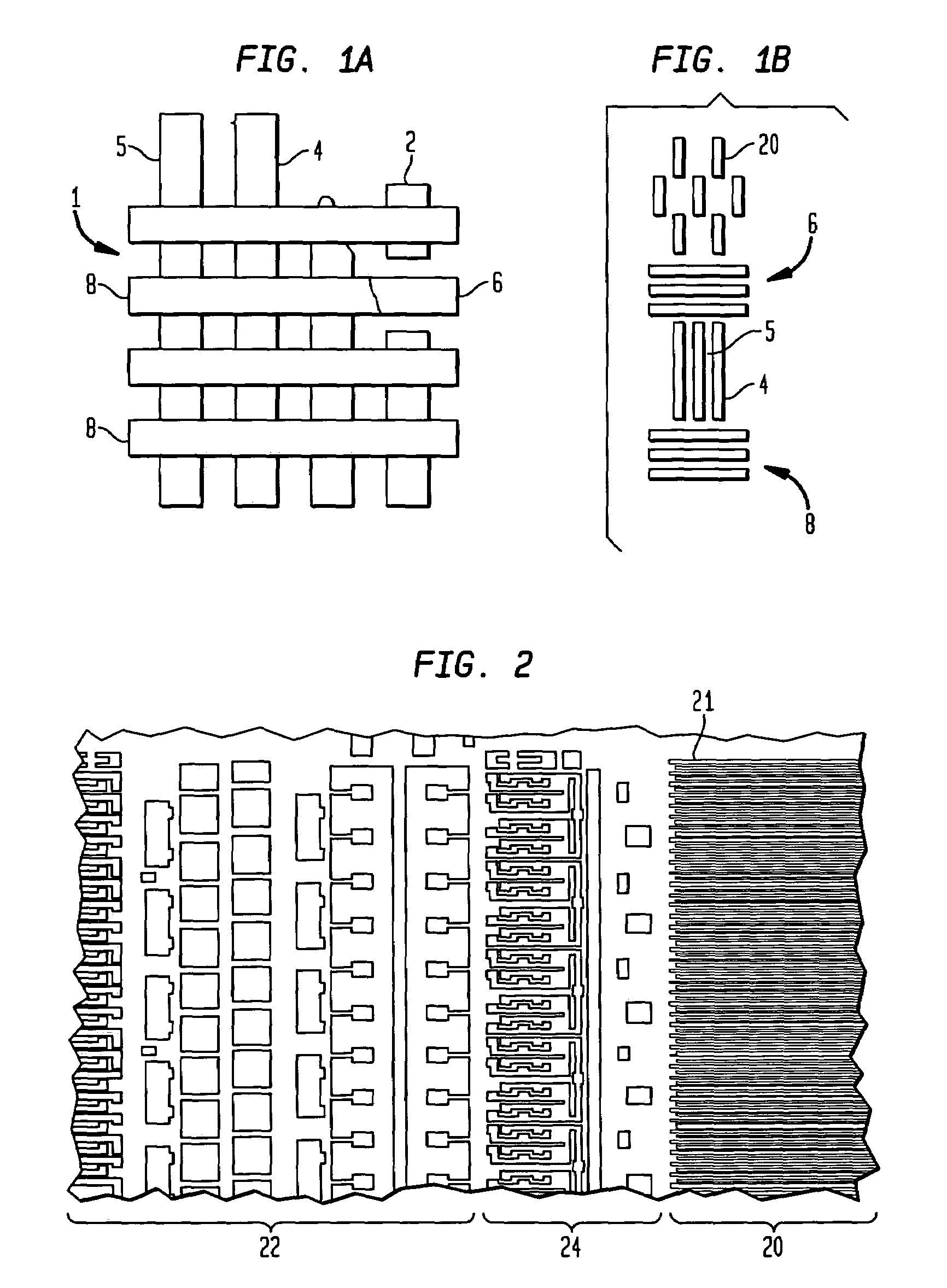Single exposure of mask levels having a lines and spaces array using alternating phase-shift mask
a phase shift mask and single exposure technology, applied in the field of optical lithography methods, can solve the problems of reducing the depth of focus, deteriorating the contrast of the pattern formed on the wafer, and neither alternative is practical at these smaller dimensions
- Summary
- Abstract
- Description
- Claims
- Application Information
AI Technical Summary
Benefits of technology
Problems solved by technology
Method used
Image
Examples
Embodiment Construction
[0036]FIGS. 1A and 1B illustrate, in plan view, a known DRAM memory cell array comprised of plural memory cells, typically a trench-based DRAM cell array known as an eight square feature or 8F2 cell. Examples of such DRAM cells and processes for the fabrication are described in U.S. application Ser. No. 09 / 888,202, filed Jun. 22, 2001, the disclosure of which is incorporated herein by reference.
[0037]FIG. 1A shows several mask patterns of the known memory cell array superimposed on one another. FIG. 1B shows each mask pattern of FIG. 1A separately, namely FIG. 1B represents the view of FIG. 1A at four different depths. The topmost pattern of FIG. 1B illustrates an arrangement of a plurality of deep trenches 20. The second pattern from the top in FIG. 1B illustrates the arrangement of the active areas 6 in which are formed the doped junctions used for connection to the pass transistors. The third pattern from the top illustrates the arrangement of the gate contact patterns or word li...
PUM
| Property | Measurement | Unit |
|---|---|---|
| phase shift | aaaaa | aaaaa |
| active area | aaaaa | aaaaa |
| area | aaaaa | aaaaa |
Abstract
Description
Claims
Application Information
 Login to View More
Login to View More - R&D
- Intellectual Property
- Life Sciences
- Materials
- Tech Scout
- Unparalleled Data Quality
- Higher Quality Content
- 60% Fewer Hallucinations
Browse by: Latest US Patents, China's latest patents, Technical Efficacy Thesaurus, Application Domain, Technology Topic, Popular Technical Reports.
© 2025 PatSnap. All rights reserved.Legal|Privacy policy|Modern Slavery Act Transparency Statement|Sitemap|About US| Contact US: help@patsnap.com



